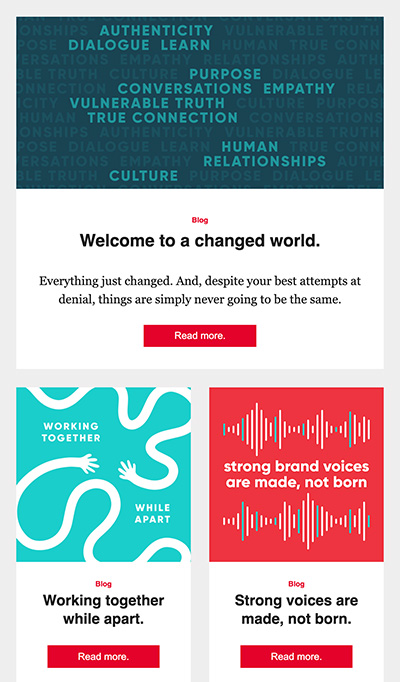3 essential components of an impactful website.
We outline a few standards and best practices to improve user experiences.

Everyone wants a strong, inviting, usable, and searchable website. Right? Well, almost everyone. There are the extremely rare websites that we build for clients to function more as tools for their very unique audience. However, even if the goal isn’t necessarily to be “found,” everyone wants a solid, usable, intuitive website that their users will enjoy visiting time and time again. To achieve this, there are some things that are absolute musts.
First, we need quality content.
Content is KING! Users are coming to your website to find information. We need to be straightforward with content and headlines, especially on the homepage. On their first visit, a user should know exactly what you do and what you want them to do within a few seconds of their first visit to your site. Remember, all this incredible content we are creating is what search engines will parse, store, and deliver to your potential visitors when conducting their search. Search engines can’t deliver content that isn’t there.
To inspire users to do what you want – buy your product, seek more information, etc. – you can use incredible photography, clear writing, tables, downloads, or some combination of all of these. In any case, users have come to your site to get information, so we must make sure we give it to them.
Second, we need to make the users’ decisions intuitive.
Lots of books are being written about a quality user experience, and they all center around making your website’s structure intuitive and elements like links obvious. If a user has to think even for a second “Where is the menu?”, “What does this do?”, or “What does this mean?”, etc., we have not done our job. If the user’s process is hindered, we haven’t created a good experience, limiting the chance for a return visit or any actual engagement.
Third, we need to make sure all websites are accessible for all people.
This goes well beyond conforming to ADA compliance in an effort to stay out of the courtroom. It’s about valuing the diversity of all people. Our work regularly includes making all the information on your website available on different devices and screen readers while adding closed captioning for all videos and ensuring that the flicker rate of animated GIFs is accessible, etc.
By following these standards, your site will be impactful, intuitive, informative, and loved by your users (and search engines).


